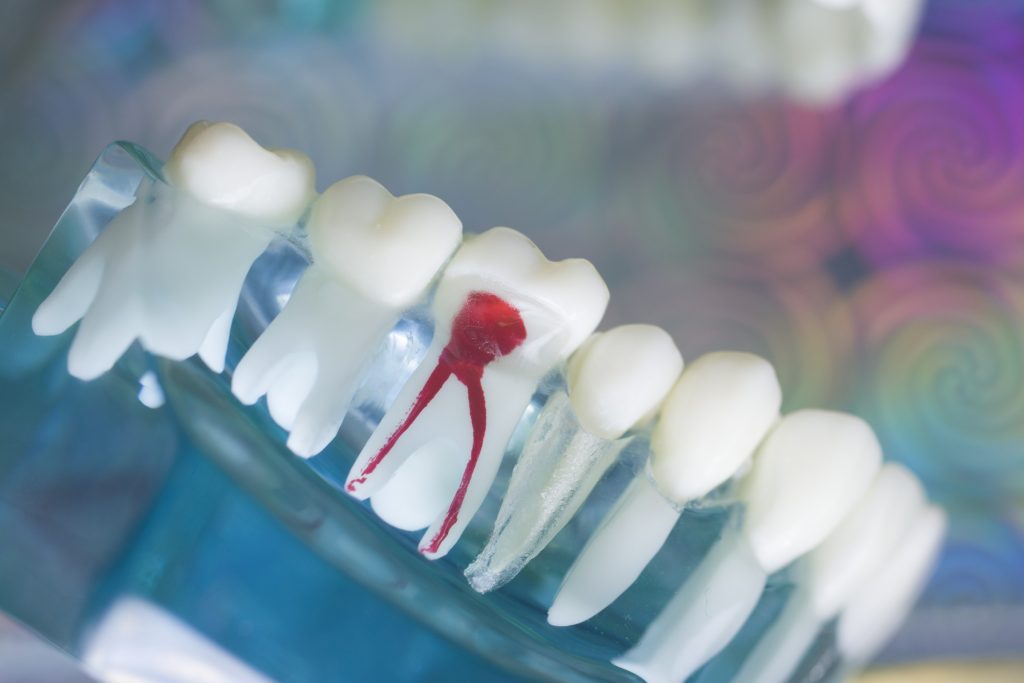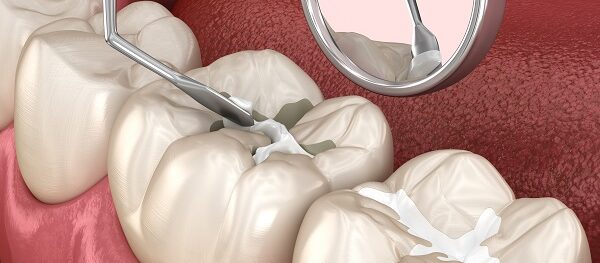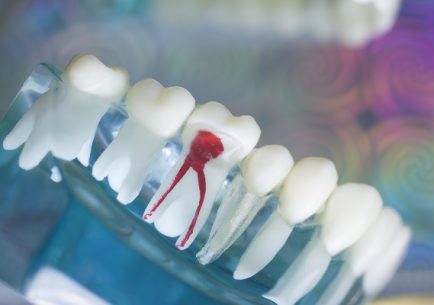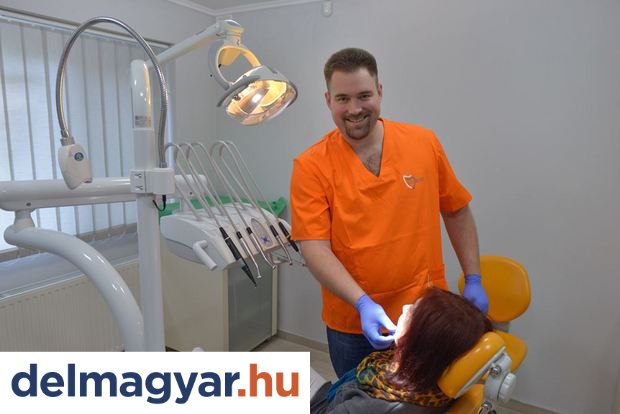Conservative dentistry
- Filling
- Microscope root canal treatment
- Traditional root canal treatment
- Fissure sealing

Services
Filling
In dentistry, we restore the damaged tooth or tooth surface by placing different materials into the damaged tooth during the filling procedure, thus preventing further decay and other trauma.
1. Direct Filling
The filling material is introduced into the cavity in a plastic state, where it sets and becomes a filling. This is the classic filling procedure. The white filling is a composite material mixture that realistically reproduces the natural colour of the tooth. It is hardened using a polymerisation lamp. It is aesthetically perfect and has a long lifetime. In our clinic, we use Takuyama Dental fillings, which are unique in the world in having two world patents, unlike any other filling material on the market. We have come to expect the highest quality from Japanese products, just think of Japanese car brands for example.
The advantage of Takuyama Dental sealants:
- adaptability to your own tooth structure: the “chameleon effect”
- wear resistance, perfect edge sealing due to its hardness
- perfect bonding (i.e. no harmful substances remain unbound within the material)
- perfect polishability, the surface can be as shiny as the tooth
- hardly shrinks at all when bonded, so the internal stress remains low and the risk of tooth fracture is low
- requires 10 seconds of illumination instead of the usual 20 seconds of bonding.
2. Indirect Filling (inlay)
The restoration is made outside the oral cavity. The dentist shall take a prepared tooth and our technician will make an impression of the missing part of the tooth. The material composition varies; it can be plastic, metal, gold or porcelain. The filling itself is put into the oral cavity in a solid state. It is usually used when the tooth is missing so much that it is not possible to restore the anatomical shape while working in the mouth. It is important that the replaced tooth regains its previous function and a chewing surface similar to the original. The missing part is made in a dental laboratory, which has the advantage that the anatomical shape of the tooth can be perfectly restored.


Dental microscope
About dental microscope
Dental microscope is a high-tech device that allows the doctor to see the area to be treated at a magnification of up to 30-40 times, thus enabling more precise diagnosis and treatment. With its use, we can establish a much more accurate diagnosis, thereby increasing the effectiveness of the treatment.
In what cases can it be used?
Dental microscope is most often used for root canal treatment, thanks to which the success rate is significantly higher compared to traditional root canal treatment. It creates a very detailed picture of the dental structures, and with its built-in high-brightness light, even hard-to-see areas become clearly visible.
In addition to root canal treatment, it can be used in many cases, such as opening invisible cracks, repairing perforations, treating gum diseases, etc.
Why is microscopic root canal treatment preferable?
- more precise diagnosis thanks to the high-resolution image;
- cracks and mini-decays that are difficult to see with the naked eye can be noticed immediately;
- much higher success rate compared to traditional root canal treatment;
- hidden root canals can also be revealed;
- less healthy tooth material needs to be removed;
- there is a greater chance of saving the tooth;
- safer, faster, more efficient treatment.
How does a microscopic root canal treatment take place?
- Local anesthesia.
- Placing rubber dam for perfect isolation (to avoid possible infections).
- Small drilling in the crown of the tooth to access the root canal.
- Measuring the length of root canals.
- Cleaning of root canals.
- Draining of channels.
- Insertion of root filling material.
Our personal consultation is free, please contact us for more information: +36-30-447-43-43.
Traditional root canal treatment
Root canal treament is not a favourite procedure for patients, but it is important to stress that with this professionally conducted treatment and proper follow-up, even the worst teeth can be restored to health! During the procedure, inflamed or already dead and infected gums are removed from the tooth structure. The root canals are then disinfected and filled. This treatment can eliminate pain, preserve the tooth, prevent further infections and the development of focuse diseases, but it is to be mentioned that it is one of the most risky procedures in dentistry.
The risk is due to anatomical variations and the way the treatment is carried out. Textbook descriptions put the idea in theoretical terms: a long, round-cut canal is dilated with thin needles and then filled with a round-cut instrument and root filling material. Unfortunately, in practice, however, root canals do not follow textbook theory at all and often have an oval, bone-shaped or completely irregular cross-section rather than a round one, which means that after physical cleaning of the canals, there may be cavities, side canals or branches that are not visible during treatment. Because of their small size, even an X-ray or CT machine can show little or nothing. Of course, since this is really the last treatment option that can be done to a tooth to get rid of the complaint, it is definitely worth a try.


Fissure sealing
Tooth decay is unfortunately a part of today’s life. Chewing teeth can be divided into three groups:
- U shaped
- V shaped
- hourglass shaped

While the first two can be cleaned well or tolerably, for many people the grooves and slopes in the middle of the tooth do not meet in a washable surface, but in an unwashable hourglass-shaped pit. The procedure itself increases tooth protection and reduces the chance of tooth decay. It can be said that it forms a protective layer in the groove of the tooth, filling it. The grooves on the chewing surface of the molars shall be filled with a liquid tooth-coloured filling material. It is particularly recommended to protect the teeth of young children, as it is at this age that the small and large molars erupt, and this method is perfect for sealing and protecting the grooves, preventing and avoiding later discomfort and larger cavities.
If the caries has already started to move towards the deeper tissues of the tooth, an extended groove sealing or a smaller filling is used, which will serve its owner better and longer.
It should be remembered, however, that the most important way to prevent tooth decay and protect teeth is proper oral hygiene (dental care) and regular dental check-ups.




